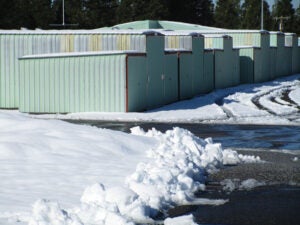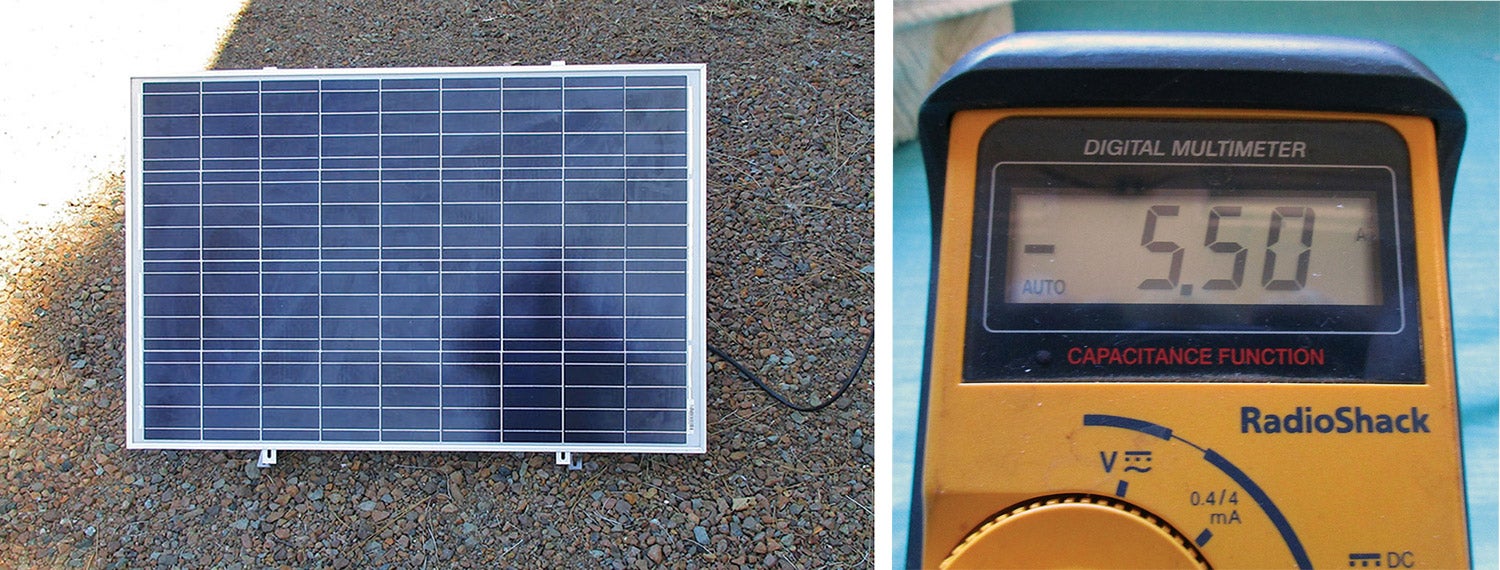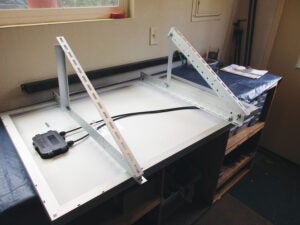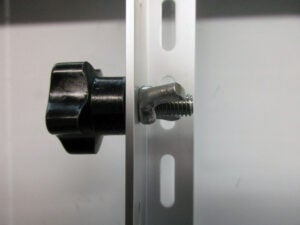Porkers of the world, relax. I’m not about to turn you all into bacon and spareribs (although that’s not a bad idea). No, HOG from now on is the Hangar Off Grid (HOG) Program.

You may not know this, but anything I write transforms not only those of you who read this stuff, but also me. Prior to writing this series, it was fire up the generator, burn several gallons of dinofuel (avgas) in the generator, turn all the fluorescent lights in the shop or hangar on, fire up the compressor, put the adult beverages into the apartment-sized fridge, turn all the radios on (music, tower, Unicom, etc.) and let’s get on with the day.
I have fundamentally changed my work habits with the advent of solar energy. I now only turn on lights where I’m working. I only use the compressor when I really need it. I have made efficient LED lights as bright as the fluorescents on less than half the power, and they’re only on where I really need the light. I’m not all that happy about a semi-cold beer at the end of the day, but my hangar radios now work on less than a quarter of the power that they used to use. Besides, ice from the home fridge in the morning and a decent insulated cooler takes care of the after-work evening adult beverage problem.
Why this electrical epiphany? Because solar power is expensive. At least in the initial phases. So far, I’ve got a system that can deliver about 1 kilowatt-hour of energy a day at an initial cost of a bit over $400. A kilowatt-hour from the local utility company is about 15 cents. Simple math shows that it will take about 2650 days (a few days over 7 years) for the solar panel to pay back the difference.
On the other hand, you don’t have the local utility’s installation fees from the utility pole to your hangar, interruptions during emergencies, the inevitable increase in kWh costs, local government requirements for “standard power installation permits” and all the rest of it. My local utility wanted $300 to run power to the hangar, and my county building department wanted $400 for the initial permit, plus the “mitigation” fees of the local fire department, school district, park district, sanitation district…ad infinitum. I’m saying that the initial solar solution is less expensive than the power company alternative, at least for me. So far the county has no permit requirement for small solar installations in personal small metal “tool sheds” (and after all, we’ve always said that an airplane is just a tool to use, yes?). Hush, now, and remember that it is always easier to ask for forgiveness than permission.
But now we have solar lights. We have radios. We have airplane battery charging systems. We have minimal cooling systems that will at least give us cool (if not completely cold) beverages at the end of the day.
Let’s get to the guts of it: How much solar power do we really need? It is sort of like determining how much engine power we need for our homebuilts. We’d like a thousand horsepower for starts, plus half a thousand more for lights, avionics, pumps and the rest of it. Then reality sets in. We settle for a hundred horses for the whole homebuilt aircraft project.

My project says that I’d like a bunch more, but I’ll settle for a 100-watt solar cell plus a 1.2 kilowatt-hour battery to hold the whole thing up. A 20-amp solar controller keeps the battery charged and the load circuits working.
After doing a lot of research and asking a lot of questions on the newsgroups, I decided to spend a few extra dollars rather than doing it on the cheap and then having to explain to you all why what I tried to cut corners on didn’t work out as well as I had hoped. To get a 100-watt solar panel, a 20-ampere charge controller and a 1200-watt-hour battery came to just a bit over $400, with the adjustable mounting bracket from an outfit called WindyNation in Southern California. And I still don’t have a compressor, drop light, refrigerator/cooler, 110-volt AC inverter and a few other solar-powered goodies.
What will this combination do for us? LED strip lights take 12 volts at an amp and a half (18 watts) each strip, and each strip will replace one 40-watt fluorescent bulb. Two strips to the fluorescent fixture will then consume 36 watts. If I replaced all the fixtures in the hangar, we’d be looking at six fixtures or 216 watts. This would deplete our 1200-watt-hour battery in a little over 5 hours if they were all on at the same time.

But that’s part of the solution to the experiment. Do we really need all six fixtures (aft fuselage, forward fuselage and wing) for both the starboard and port sides of the aircraft? And do I really need any of these six if I’m working with a single 5-watt LED light in my drop cord under the instrument panel? Nope, I really don’t, and refer back to what I said about the epiphany of only turning on the lights and appliances that I really need at the time.
As we will see in a month or so, each of the six overhead LED fixtures is on its own individual switch, so we only need to turn on the one that we really need. Not only that, but in my setup each strip in each fixture is also on its own switch. We only use what we really need for the job at hand.

The heart of the system is the solar panel. Solar panels are made up from little tiny specks of silicon. It turn out that when sunlight energy hits a silicon crystalline atom, it knocks an electron loose, which in turn knocks another electron downstream loose, and when you get several gazillion electrons loose at one time, you’ve got some real current flowing. (The actual number is about 6 with 18 zeroes following it electrons per second, per ampere flowing.) This solar panel will put out about 5 amps, so you get 30,000,000,000,000,000,000 electrons a second getting knocked out of their cozy little crystals every second to juice up your battery. Say “Thank you, Einstein,” for calculating this for us back in 1905.
The bad news is that silicon is relatively insensitive to infrared light, which is the sunlight that warms our bodies but is blocked by clouds. The good news is that silicon is very sensitive to ultraviolet light, which means that clouds transparent to UV have little impact on how much energy the solar panel is going to produce…until the clouds start dropping precipitation, which scatters the UV all over the place.
In solar cells we have our choice of three technologies: monocrystalline, polycrystalline, and amorphous. Monocrystalline (one crystal) is expensive and superefficient. Polycrystalline (many crystals) is fairly inexpensive and moderately efficient. Amorphous (random crystals) has trouble reaching the current levels we really need for our system. For my money, polycrystalline solar panels are the best compromise between dollars and performance.

As to the batteries, if I were writing this 10 years from now, I suspect that I’d be using lithium batteries. But right now, the AGM (absorbent glass mat) lead-acid is the best compromise. I shy away from “truck” and “marine” and even aviation AGM batteries for one reason: They have one job—start the engine—and their design reflects their purpose in life. They give a huge slug of current for a short time to get that dinofuel motor turning and then just float along for the ride. Indeed, most of these batteries are rated in “cold cranking amps” and not truly ampere-hours of continuous current. A deep-cycle AGM battery is my battery of choice to put out a reasonable amount of current for quite a few hours at a time.
We’ll talk about the solar controller in a future column. By the time you read this, there will be a website dedicated to the installation of solar on hangars. The main website will still be www.rstengineering.com, but you will be able to click on a link taking you directly to the “wholeHOG” page, where you will find spreadsheets, parts source lists, discussions and everything I know about the subject. Keep reading, more HOG next month. Until then…Stay tuned…













